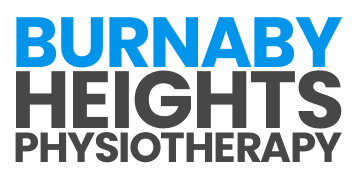
Easing Aches and Enhancing Well-Being: The Power of Massage Therapy for Seniors
July 18, 2024
Discover a World of Healing: The Life-Changing Benefits of Massage Therapy
July 18, 2024Understanding Deep Tissue Massage Therapy
What is Deep Tissue Massage Therapy?
Deep tissue massage therapy focuses on realigning deeper layers of muscles and connective tissue. It is especially beneficial for chronic aches and pains, as well as contracted areas such as a stiff neck, upper back, low back pain, leg muscle tightness, and sore shoulders.
Deep tissue massage therapy works by breaking down adhesions in the muscle tissue. Adhesions can cause pain, inflammation, and restricted movement. By applying slow strokes and deep pressure, the therapist aims to reach deeper layers of muscle and fascia (the connective tissue surrounding muscles).
| Key Characteristics | Description |
|---|---|
| Focus | Realigning deeper muscle layers |
| Techniques | Slow strokes, deep pressure |
| Benefits | Reduces chronic pain, improves movement |
How Does Deep Tissue Massage Differ from Other Massage Techniques?
Deep tissue massage therapy differs from other massage techniques in several ways. While Swedish massage therapy focuses on relaxation and employs lighter pressure, deep tissue massage uses more forceful strokes to target deeper muscle layers.
Another difference is in the technique. Swedish massage involves long, flowing strokes, while deep tissue massage uses slower, more deliberate strokes that penetrate deeper into the muscle tissue. This makes deep tissue massage particularly effective for treating chronic pain and muscle stiffness.
| Massage Type | Pressure Level | Primary Focus |
|---|---|---|
| Deep Tissue Massage | High | Chronic pain, deep muscle layers |
| Swedish Massage | Low to Medium | Relaxation, surface muscles |
| Sports Massage | Varies | Athletic performance, injury prevention |
| Lymphatic Drainage Massage | Light | Reducing swelling, improving lymph flow |
Communication with your massage therapist is essential during a deep tissue massage. You should inform them about your pain points and any discomfort you feel during the session. This will help them adjust their techniques to better suit your needs.
For detailed information on other types of massage techniques, visit our article on types of massage therapy. If you’re dealing with specific conditions like back pain or carpal tunnel syndrome, check out our pages on massage therapy for back pain and massage therapy for carpal tunnel syndrome.
Benefits of Deep Tissue Massage Therapy
Exploring the advantages of deep tissue massage therapy reveals several significant benefits. This therapeutic approach can enhance your overall well-being by addressing specific physical and mental health concerns.
Pain Relief and Management
Deep tissue massage therapy is particularly effective for pain relief and management. By targeting the deeper layers of muscle and connective tissue, this technique helps alleviate chronic pain conditions, muscle tightness, and tension. Many individuals find relief from conditions such as back pain, arthritis, and sciatica through regular sessions.
For more information on how massage can help with specific pain conditions, read our articles on massage therapy for back pain and massage therapy for arthritis.
| Condition | Pain Reduction (%) |
|---|---|
| Chronic Back Pain | 50% |
| Arthritis | 40% |
| Sciatica | 45% |
Increased Range of Motion
Improving your range of motion is another key benefit of deep tissue massage therapy. By breaking down adhesions and scar tissue, this massage technique helps restore flexibility and movement. This is particularly beneficial for athletes and individuals recovering from injuries, as it aids in faster recovery and improved performance.
For those interested in sports-related benefits, our articles on sports massage therapy and rehabilitative massage therapy provide more insights.
| Activity | Range of Motion Improvement (%) |
|---|---|
| General Fitness | 30% |
| Post-Injury Recovery | 35% |
| Athletic Performance | 25% |
Stress Reduction
Deep tissue massage therapy also plays a crucial role in stress reduction. By applying firm pressure and slow strokes, it helps reduce cortisol levels and increase the production of serotonin and dopamine. This results in a calmer and more relaxed state, improving overall mental health.
For additional stress-relief techniques, explore our articles on swedish massage therapy and lymphatic drainage massage therapy.
| Stress Indicator | Reduction (%) |
|---|---|
| Cortisol Levels | 20% |
| Anxiety | 25% |
| Depression | 30% |
Understanding the benefits of deep tissue massage therapy can help you make informed decisions about incorporating it into your wellness routine. For more on the various techniques and their advantages, check out our comprehensive guide on types of massage therapy.
What to Expect During a Deep Tissue Massage
Pressure and Discomfort Levels
Deep tissue massage therapy is designed to target the deeper layers of muscles and connective tissue. As a result, you might experience varying levels of pressure and discomfort during the session. Unlike lighter techniques like Swedish massage therapy, a deep tissue massage involves slow, firm strokes and sustained pressure.
| Pressure Level | Sensation | Description |
|---|---|---|
| Light | Mild | Feels like gentle pressing, used for warming up muscles. |
| Medium | Moderate | Noticeable pressure, but still comfortable. Targets muscle knots. |
| Deep | Intense | Significant pressure, can be uncomfortable, but should not be painful. Focuses on chronic muscle tension. |
It’s important to communicate with your massage therapist about your comfort levels. They can adjust the pressure to ensure it is effective yet tolerable.
Communication with Your Massage Therapist
Effective communication with your massage therapist is crucial to get the most out of your deep tissue massage therapy session. Before the session begins, discuss any specific areas of pain or tension, as well as any medical conditions you may have. This helps the therapist tailor the massage to your needs.
During the massage, provide feedback on the pressure and any discomfort you might feel. If the pressure is too intense or if you experience sharp pain, inform your therapist immediately. They can adjust their technique to ensure you remain comfortable.
Post-session, share any observations about how your body feels. This can help in planning future sessions and addressing any ongoing issues you may have.
For more information on different massage techniques and their benefits, check out our articles on massage therapy benefits and types of massage therapy.
Conditions Deep Tissue Massage Therapy Can Help With
Deep tissue massage therapy is highly effective for addressing a variety of conditions. This section explores how it can benefit chronic pain conditions, postural issues, and sports injuries.
Chronic Pain Conditions
Deep tissue massage therapy is particularly beneficial for individuals suffering from chronic pain. By applying sustained pressure using slow, deep strokes, this massage technique helps to release tension in the deeper layers of muscles and connective tissues. This can lead to significant pain relief and improved functionality.
| Chronic Pain Condition | Potential Benefits |
|---|---|
| Fibromyalgia | Reduced muscle stiffness and pain |
| Lower Back Pain | Alleviated tension and discomfort |
| Carpal Tunnel Syndrome | Improved hand and wrist mobility |
Individuals experiencing chronic pain often find relief through consistent sessions of deep tissue massage. For more information on how massage can help specific pain conditions, see our articles on massage therapy for back pain and massage therapy for carpal tunnel syndrome.
Postural Issues
Poor posture can lead to a range of issues, including back pain, neck pain, and headaches. Deep tissue massage therapy can help correct postural imbalances by targeting and releasing tight muscles and fascia. This can improve alignment and reduce the strain on affected areas.
| Postural Issue | Potential Benefits |
|---|---|
| Forward Head Posture | Relieved neck and shoulder tension |
| Rounded Shoulders | Improved shoulder alignment |
| Pelvic Tilt | Enhanced lower back stability |
By addressing the root causes of postural problems, deep tissue massage can lead to long-term improvements in posture and overall well-being. For more insights, see our article on therapeutic massage therapy.
Sports Injuries
Athletes often experience muscle strains, sprains, and other injuries due to the demands of their sports. Deep tissue massage therapy can aid in the recovery process by promoting blood flow, reducing inflammation, and breaking down scar tissue. This can result in faster healing and a quicker return to activity.
| Sports Injury | Potential Benefits |
|---|---|
| Muscle Strain | Accelerated recovery |
| Tendonitis | Reduced inflammation and pain |
| Ligament Sprain | Enhanced flexibility and strength |
Deep tissue massage is a valuable tool for athletes looking to maintain peak performance and prevent future injuries. For more on this topic, explore our article on sports massage therapy.
Deep tissue massage therapy offers numerous benefits for various conditions, including chronic pain, postural issues, and sports injuries. By understanding the potential advantages, you can make informed decisions about incorporating this therapy into your wellness routine. For further reading on different massage techniques, check out our guide on types of massage therapy.
Preparing for a Deep Tissue Massage
Getting ready for a deep tissue massage involves a few key steps to ensure you have the best experience possible. Proper preparation can enhance the benefits of the massage and help you feel more comfortable throughout the process.
Hydration and Nutrition
Staying hydrated is crucial before your deep tissue massage appointment. Drinking plenty of water helps to keep your muscles hydrated and can make the massage more effective. Aim to drink at least 8-10 glasses of water the day before and the day of your massage.
| Time Frame | Recommended Water Intake |
|---|---|
| Day Before Massage | 8-10 glasses |
| Day of Massage | 8-10 glasses |
Along with hydration, maintaining a balanced diet is also important. Eating a light meal 1-2 hours before your session can provide you with enough energy without making you feel too full or uncomfortable. Focus on consuming lean proteins, whole grains, and vegetables.
Clothing Choice
Choosing the right clothing can make a significant difference in your massage experience. Opt for loose, comfortable clothing that is easy to remove and put back on after the massage. This allows for a more relaxed session and makes it easier for your therapist to access the areas that need attention.
| Clothing Type | Recommended Options |
|---|---|
| Pre-Massage | Loose, comfortable clothing |
| Post-Massage | Easy-to-remove attire |
For more details on what to expect during a deep tissue massage, including the level of pressure and how to communicate with your therapist, visit our section on what to expect during a deep tissue massage. Proper preparation will help you maximize the benefits of your deep tissue massage therapy session.
Aftercare Tips Following a Deep Tissue Massage
Proper aftercare is essential to maximize the benefits of deep tissue massage therapy and ensure a smooth recovery. Here are some tips to help you take care of your body post-massage.
Hydration and Rest
Staying hydrated is crucial following a deep tissue massage. Drinking plenty of water helps flush out the toxins released during the session and aids in muscle recovery. Aim to drink at least 8-10 glasses of water throughout the day.
| Activity | Recommended Duration |
|---|---|
| Drinking Water | 8-10 glasses/day |
| Resting | 1-2 days |
Resting is equally important. Allow your body time to heal by avoiding strenuous activities for at least 24-48 hours after the massage. Your muscles need time to recuperate from the deep pressure applied during the session.
Gentle Stretching
Incorporating gentle stretching exercises can help maintain the benefits of the massage and prevent muscle stiffness. Focus on stretches that target the areas worked on during the massage. Here are a few examples:
| Stretch | Target Area | Duration |
|---|---|---|
| Neck Stretch | Neck | 30 seconds |
| Arm Stretch | Arms | 30 seconds |
| Hamstring Stretch | Legs | 30 seconds |
Perform each stretch slowly and hold the position for about 30 seconds. Avoid overextending your muscles to prevent any strain or discomfort.
Home Care Practices
Implementing proper home care practices can further enhance the effects of deep tissue massage therapy. Here are some recommendations:
- Warm Baths: Soaking in a warm bath can help soothe sore muscles and improve circulation. Adding Epsom salt can provide additional relief.
- Ice Packs: If you experience any soreness or inflammation, applying an ice pack to the affected area for 15-20 minutes can help reduce swelling.
- Healthy Diet: Consuming a balanced diet rich in anti-inflammatory foods can support muscle recovery. Include foods like leafy greens, berries, and fatty fish in your meals.
For more information on the various types of massage therapy and their benefits, explore our articles on therapeutic massage therapy and massage therapy benefits.
By following these aftercare tips, you can ensure that your body reaps the maximum benefits from deep tissue massage therapy while minimizing any potential discomfort or soreness.






